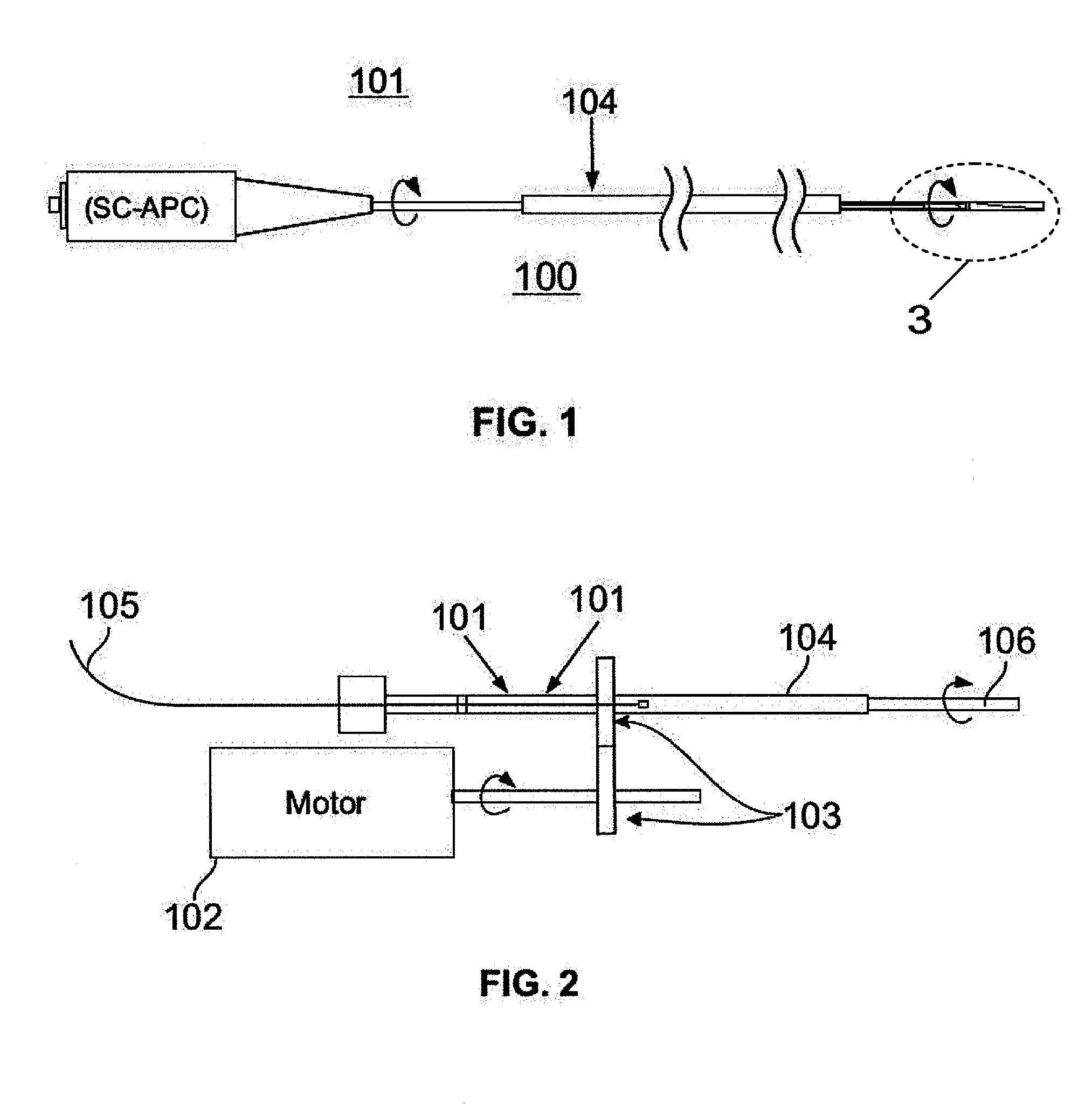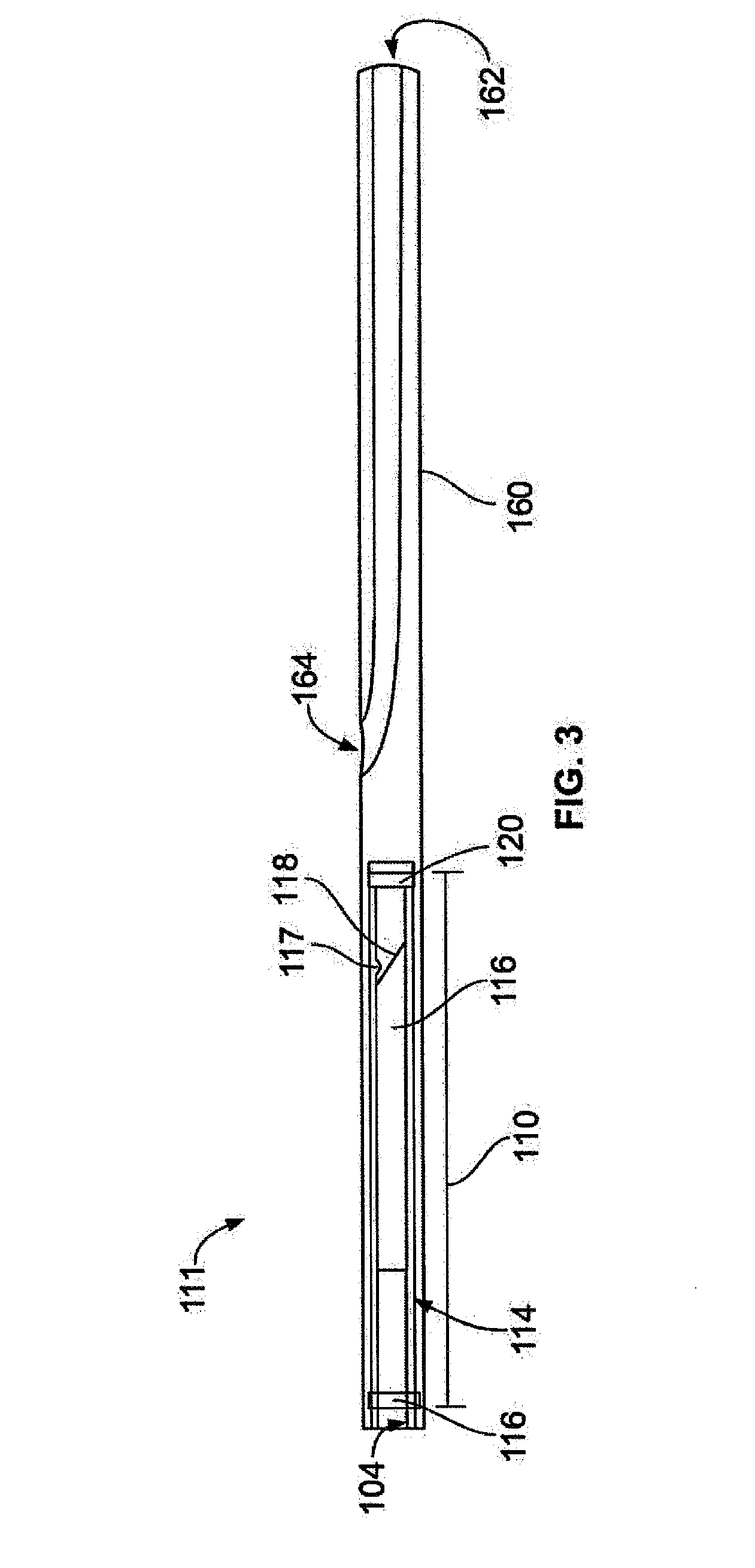Oct-ivus catheter for concurrent luminal imaging
a luminal imaging and octave catheter technology, applied in the field of in vivo imaging apparatus, can solve the problems of myocardial infarction, prone to rupture, no methods are currently available to the cardiologist,
- Summary
- Abstract
- Description
- Claims
- Application Information
AI Technical Summary
Benefits of technology
Problems solved by technology
Method used
Image
Examples
Embodiment Construction
[0025]In the accompanying figures, like elements are identified by like reference numerals among the several preferred embodiments of the present invention.
[0026]In the present invention, a distal end assembly including an ultrasound transducer 120 and an optical coherence tomography (“OCT”) optical assembly (as hereinafter described) are positioned longitudinally adjacent or in close proximity to each other at or near a distal end of a catheter assembly 111. Both the ultrasound transducer 120 and the OCT optical assembly are coupled to a rotary drive system (as hereinafter described) that rotates both the OCT optical assembly and ultrasound transducer 120 about their longitudinal axis and within a catheter sheath. In use, the OCT-IVUS catheter assembly 111 is carefully maneuvered through a patient's body to a point of interest such as within a blood vessel to position the distal end in imaging proximity with the point of interest.
[0027]The ultrasound transducer 120 may be a single-...
PUM
 Login to View More
Login to View More Abstract
Description
Claims
Application Information
 Login to View More
Login to View More - R&D
- Intellectual Property
- Life Sciences
- Materials
- Tech Scout
- Unparalleled Data Quality
- Higher Quality Content
- 60% Fewer Hallucinations
Browse by: Latest US Patents, China's latest patents, Technical Efficacy Thesaurus, Application Domain, Technology Topic, Popular Technical Reports.
© 2025 PatSnap. All rights reserved.Legal|Privacy policy|Modern Slavery Act Transparency Statement|Sitemap|About US| Contact US: help@patsnap.com



